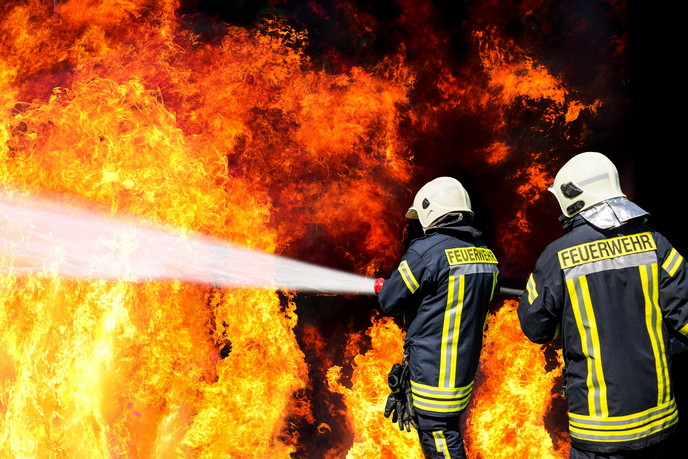From melamine to fireproof non-woven and clothing
Firefighters, and other workers exposed to high-temperature risks, such as volcanologists, need the ultimate in protective clothing. Current high-performance fabrics are generally expensive and suffer several limitations. The EU-funded smartMELAMINE(opens in new window) project developed an affordable and superior alternative. The innovation is a fireproof non-woven, that addresses challenges, which conventional thermoplastic based non-woven materials cannot. The project focused on upscaling the pilot plant into a workable production process.
Melamine based non-woven
This new non-woven is a flexible fleece manufactured from melamine, which is inherently fireproof material. By converting it into a fleece we end up in textile material being superior in many properties. Researchers developed a method for turning the melamine resin into a fleece. The process is not unlike that of making fairy floss (cotton candy). In that case, pure sugar is a hard solid, which is melted and spun into fine strands, yielding a material with a soft, foamy texture. The smartMELAMINE process is similar. Called meltblown, the process involves feeding chips of melamine resin into a heater that melts the resin. With help of hot air, the resin then stretched into very fine filaments. These are then set into a web-like solid form. “The process is initiated chemically,” says Dr Igor Mihelič, project coordinator, “and takes place at controlled temperatures. So actually, we are combining a typical chemical process with a textile process.”
Fireproof fleece
The resulting fleecy material has uniquely fire-resistant properties. The material does not burn, shrink, smoke or melt. In manufacturing protective clothing, a smartMELAMINE layer is combined with other materials to create a composite garment. For example, it might be matched to aramids or flame-retardant viscose, enabling the garment to block fire or electric arcs. The new material is also thermally and acoustically insulating. In automotive use, both aspects of smartMELAMINE’s insulation properties allow a single layer of the material to provide better performance than the PET-glass-aluminium combinations currently in use. The fabric also makes an effective filter material. Furthermore, it is a zero-emissions product, certified suitable for toddlers. “We can make smartMELAMINE in different versions to suit customer needs,” says Dr Mihelič. “We can vary the weight, density, fibre width, colour and texture. We can produce a very lofty rollable product, or a stiff, stackable product.” This variation is achieved by changing the process parameters to modify the stiffness as required. During the project, the team successfully scaled up the manufacturing process. The work yielded a plant capable of producing the material in widths up to 2.4 m. Subsequently, researchers produced industrial-scale samples for evaluation by potential customers, who responded positively. Thus, the ready-to-use smartMELAMINE material is now available commercially, and at competitive prices. Widespread adoption of the fabric will mean workers facing extreme fire or thermal dangers will be better protected, as will building occupants and motorists. Used as a filter material, smartMELAMINE will minimise the environmental impact of gases emitted from vehicles and factories.







